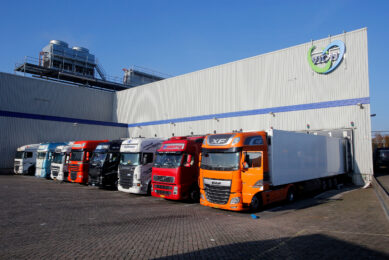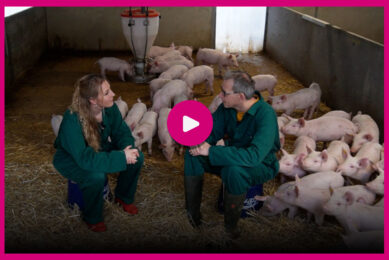EU: Toys should entertain pigs longer
![[Photo: Mark Pasveer]](https://www.pigprogress.net/app/uploads/2021/04/001_720_rb-image-2797443-848x565.jpeg)
European Union regulations on pig distraction materials might change in the future. The latest insights point out that toys ought to continuously grasp the interest of pigs – not just once.
Since 2003, European regulations have required that pigs need to have access to distraction materials. A future with tighter regulations follows from an advice by the European Commission that was issued in March 2016, related to tail docking. Despite not being mandatory yet, advices usually precede legislation.
Risk assessment to tail biting
The Commission would like pig producers to do a risk assessment on how to avoid tail biting. They need to take into account factors like air quality, nutrition, hygiene and available distraction material. With regard to these toys, the pigs ought to be able to digest them, to chew on them, to play around with them and manipulate them.
In addition, the toys need to continue to attract the pigs’ attention, the pigs should be able to play with the toys using their snouts, there should be plenty of it, and it should be clean as well as hygienic. Should a toy not meet all characteristics, then combinations need to be made.
In other words: just providing a chain for the pigs is not sufficient. The Commission expects the EU member states to start working on a practical solution.
Also interesting: Finisher pigs having a ball
Since January 2003, providing distraction materials to sows
and pigs has become mandatory in the EU. A host of different solutions have been shown at trade shows, but funnily enough, pigs don’t seem too interested. What if a toy did capture their interest? Read full article
Pig toy examples: from racks to rubbers
Since 2003, in various countries several initiatives have been set up for providing distraction materials for pigs.
In the Netherlands, for instance, after having consulted Wageningen UR and the industry, these regulations have been translated into guidelines. Allowed methods nowadays include straw racks, straw tubes as well as rooting devices. In addition, anti-biting rubbers, ropes and wooden sticks are allowed. Just providing a chain is not considered not enough – this is allowed, however, in combination with other materials.
In addition, roughage is also being used as distraction material, for instance a handful of maize or corn cob mix (CCM). This is also beneficial from a gut health perspective. In addition, it does get pigs moving, which is good as an extra moment of checking whether all animals are all right.
Alfalfa and roughage for pigs
The pig producer in the picture is providing alfalfa to his pigs. Typical for making roughage available in e.g. tubes or racks so that the animals can nibble on it but not root in it. Providing roughage, however, does cost extra money as well as labour – and it might clog the manure systems.











